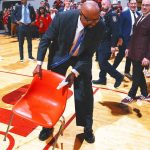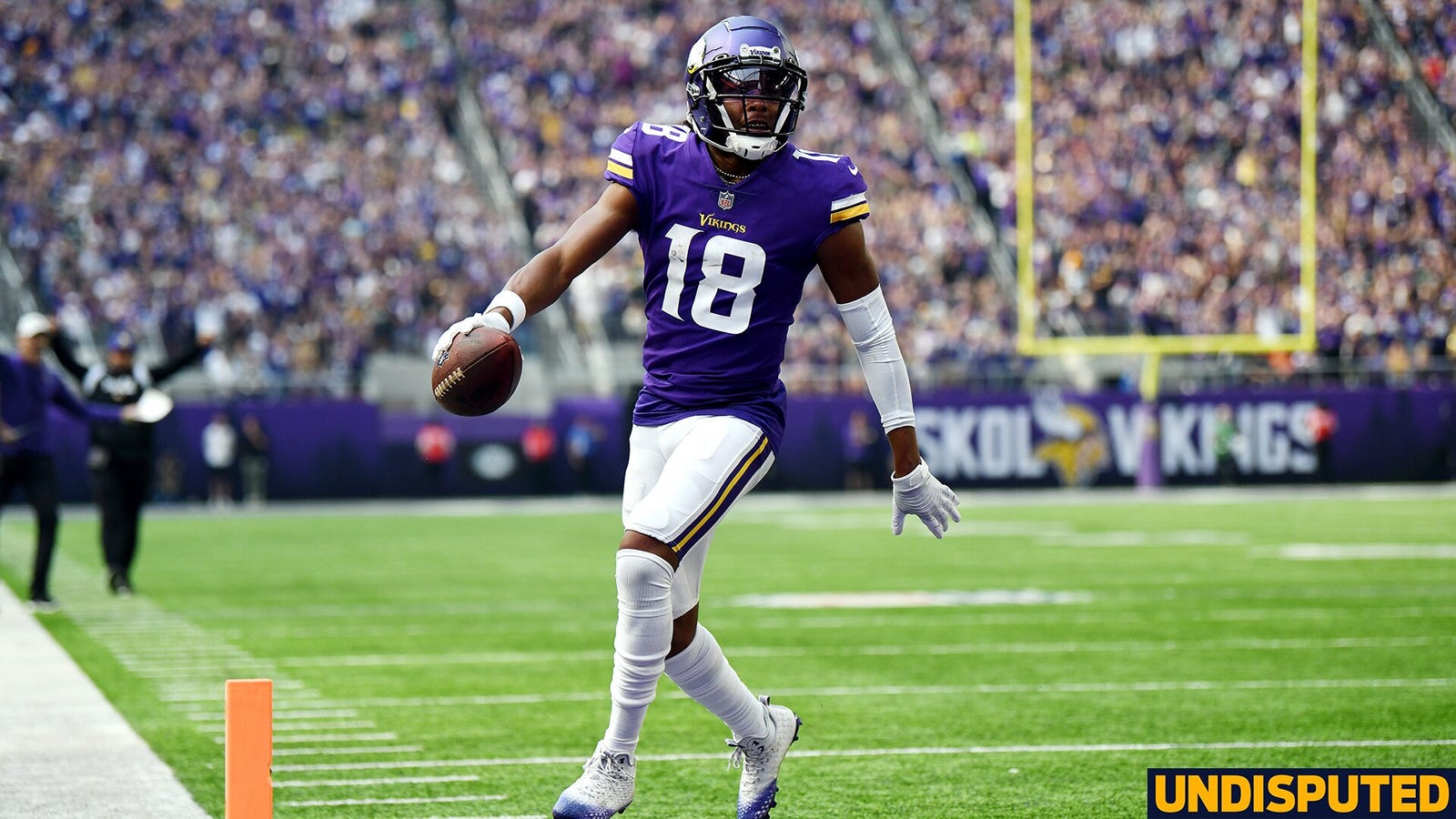The NFL‘s shift to a pass-centric league in the 2010s has led to an explosion of premier pass-catchers dominating the league. After growing up watching the likes of Julio Jones, Antonio Brown, Dez Bryant, Odell Beckham, Jr. and others dominate the league with their electric playmaking skills, the next generation of wideouts might be the greatest collection of pass-catching talent in NFL history.
Before you roll your eyes or leave a snarky comment for me on X, the record-breaking numbers put up by Justin Jefferson, Ja’Marr Chase, CeeDee Lamb and their contemporaries make it hard to dispute the young wideouts’ impact on the game. With Tyreek Hill, Davante Adams, Stefon Diggs and a few late twenty-somethings also posting elite production on their own, we are in the golden era of wide-receiver play in the NFL.
The rise of the wideout to a marquee position represents a drastic shift in the team-building process. Back in the early 2000s, when I was an NFL scout, the game was built around the running back with several coaches still hanging onto the “three yards and a cloud of dust” approach popularized by Vince Lombardi in the 1970s. Those old-school philosophies have fallen by the wayside as coaches and executives have committed to building teams around the passing game with passers, pass-catchers, pass-rushers, and pass-protectors.
Although the league has always been about quarterbacks, pass-rushing defensive ends/outside linebackers and left tackles, the emergence of wide receivers as essential pieces to a championship puzzle has changed how the position has been evaluated and prioritized in meeting rooms around the league. Teams are willing to expend first-round picks on pass-catchers with elite playmaking skills, as evidenced by the number of wide receivers who have been selected in the first round since 2020.
ADVERTISEMENT
Teams are not only willing to invest significant draft capital to acquire a blue-chip wide receiver, they are also willing to spend “quarterback money” to secure the services of an elite playmaker. Hill set the market with a four-year, $120 million deal that pushed wide receivers over the $30 million per year threshold, and Jefferson and Chase could join him in the exclusive club.
As spectacular playmakers with impressive résumés, the former LSU teammates deserve top-of-the-market deals. Jefferson has become the NFL’s undisputed WR1 after surpassing Randy Moss as the youngest player to record 25 career 100-yard receiving games. And his 51 total games are the fewest it has ever taken a pass-catcher to reach that mark in the modern era, surpassing Lance Alworth’s 55-game mark.
Not to be outdone, Chase is a touchdown machine with 22 “tuddies” in 33 career games. Despite getting off to a slow start in 2023 (29 catches, 284 receiving yards), the third-year pro is an unstoppable force on the perimeter as a dynamic “catch-and-run” specialist, with his superior size and strength overwhelming defenders on the perimeter.
With Lamb, DeVonta Smith, Jaylen Waddle, Amon-Ra St. Brown and a crew of young wideouts also posting gaudy numbers as WR1/WR2s, the position has quickly become one of the most impactful spots on the field. Moreover, teams find it hard to thrive offensively without one or two A-plus playmakers in the passing game.
The NFL’s decision to change or tweak several rules, including targeting, defensive holding and pass interference, has opened the field for wide receivers. Pass-catchers no longer fear venturing between the hashes due to the legislation virtually eliminating the big hits by enforcers that would discourage over-the-middle throws.
In addition, teams are more willing to gamble on “50-50” balls down the field due to harsh penalties against the defense if a pass interference penalty is called. With the offense given the ball at the spot of the foul, it is sensible for teams to throw more “alley oops” to the basketball-like athletes running around the perimeter.
As I’ve seen firsthand as a coach, the NFL has benefited from the best athletes at the lower levels moving to the position early. The explosion of flag football and seven-on-seven at the youth and high school levels has prompted more players to become pass-catchers. With skill trainers operating the overwhelming majority of seven-on-seven teams on the club circuit, players spend the entire offseason working on route-running and pass-catching drills.
The collegiate level continues the development with more teams operating with three- and four-receiver formations in pass-heavy schemes. The daily repetitions enhance their skills while also providing the NFL with experienced pass-catchers with 200-plus catches on their stat sheet as two- and three-year starters.
By comparison, I was selected by the Buffalo Bills with the 48th overall pick in the 1994 draft after catching just 63 balls in four seasons at the University of North Carolina-Chapel Hill. The lack of experience and exposure to an NFL route tree placed me behind the eight-ball as a pro, and I never quite overcame that deficiency.
Fast-forward to today’s game and there is not a wide receiver in the draft who has not caught thousands of passes and run 10,000-plus routes by the time he enters the league. Although the prospects still need some skill refinement and polish under the direction of experienced NFL coaches, the league is getting more “plug-and-play” players at wide receiver.
[Related: 2023 NFL WR rankings: Justin Jefferson leads loaded list of top 10 receivers]
That is why an unheralded rookie like Puka Nacua can set the league on fire as a fifth-round pick out of BYU. As a two-year starter with the Cougars, Nacua had 91 catches, 1,430 receiving yards and 11 touchdowns in an offense that featured pro-style routes on the perimeter. In addition, he added 357 rushing yards and five touchdowns on 39 carries as a multipurpose weapon for the Cougars.
With the Los Angeles Rams, Nacua has stepped in and immediately boosted the offense with his playmaking skills from the slot. The 6-foot-1, 205-pound receiver has set records for most receptions (39) and receiving yards (501) for a rookie through four games. And Nacua is just the second player in NFL history with 100-plus receiving yards in three of his first four pro games.
The quick ascension of a fifth-round pick who was not regarded as a “can’t miss” prospect in pre-draft evaluations speaks volumes about how quickly young wideouts can acclimate to the NFL game.
Jefferson, Chase, Lamb, Smith, Waddle and St. Brown are also prime examples of young pass-catchers seizing the WR1 or co-WR1 role as rookies. Each found immediate success as the focal point of his respective offense. Their success is not coincidental because each player moved into a similar role to his college role. Thus, scouts and coaches wisely made “apples to apples” comparisons when projecting how each player would be utilized within their schemes.
As more wide receivers enter the league as ready-made WR1s, the scouting world will continue to change the team-building process to prioritize pass-catchers as marquee players. With the lower levels committed to putting the best athletes at the position, wide receivers will continue to shine as impact players in the league from Day 1.
Bucky Brooks is an NFL analyst for FOX Sports. He also breaks down the game for NFL Network and as a cohost of the “Moving the Sticks” podcast. Follow him on Twitter @BuckyBrooks.
NFL trending

Get more from National Football League Follow your favorites to get information about games, news and more














